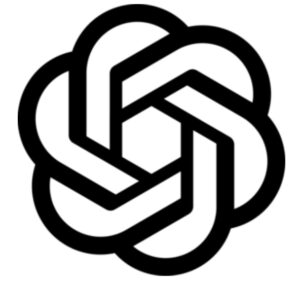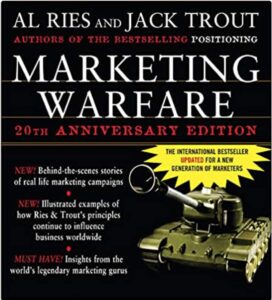
Big idea: How to de-position your competition [includes case studies]
7 minute read. 12:45 minute listen:
Many white papers try to attack the competition.
This challenge often falls to the white paper writer, with little guidance from the marketing team.
“Show how our solution is better,” they may say. Or something just as vague.
But how do you do that? How do you attack a competitor in a white paper?
How do you de-stabilize the positioning they worked years to create?
Here’s how, in four simple steps plus three case studies and a couple quick tips.
Step 1: Understand positioning
As described in Marketing Warfare, the goal of all branding is to occupy a coveted position in your prospect’s mind.
You want prospects to think of your firm as the first, the best, the most, the industry standard.
Once you achieve that, it’s extremely hard for any competitor to dislodge you.
When you’re the “king of the mountain” you can look down on the competition from the heights.
You’re not going to let them waltz in and steal your crown jewels. And believe me, you have treasure they want, things like:
- A commanding market share
- First place in Google for all the best keywords
- A premium product with awards and reviews to prove it
- Dozens of case studies from happy customers
- Tons of money in the bank
Those are the rewards that come with top positioning.
And that’s what you’re up against when you decide to attack a market leader. I call that “de-positioning.”
Step 2: Find the weakness in their strength
 Most marketing teams are preoccupied with the fine details of their own products and services.
Most marketing teams are preoccupied with the fine details of their own products and services.
But to attack a market leader, you need to study it intensely.
As authors Al Ries and Jack Trout point out, your challenge is to “find a weakness in the leader’s strength and attack at that point.”
First, you need to identify their key strength.
- Then stand that on its head and shake it hard until a weakness falls out
- Think negative, so that up is down; day is night
- Look for drawbacks, side effects, or unintended consequences
Find something fundamental to the architecture, business model, materials, platform, or technology of their product.
Something that would cost them millions and take years to change.
Something so unthinkable they will laugh it off… until it’s too late and the hordes are storming the castle.
It takes insight and imagination and time to dislodge the market leader.
That’s why it hurt so bad when someone did it to me.
Case study: How a competitor mopped the floor with my product
In the late 1990s, I was VP of Marketing for a software firm making an add-in for the popular ERP system Oracle Applications.
We were truly the king of the hill:
- We had the first product in our niche
- We had happy customers all over the continent
- We were featured in Oracle’s sales enablement materials
- We won every deal we bid on
Until a smaller competitor found the weakness in our strength.
Our software was solid, it seldom crashed for needed tweaking. But it was written in an obscure programming language called Perl.
Our buyers never looked at our code. None of their IT team knew Perl anyway.
And that was our weakness: Using technology unfamiliar to our buyers.
How a smart competitor de-positioned us
Let’s call our competitor Brand X.
Brand X was coded in the native programming tools that came with Oracle Applications, Oracle Forms and PL/SQL.
We thought that made their code clunky and inefficient. After all, IT people were constantly futzing with their Oracle systems.
But Brand X figured out the weakness in our strength.
They could show an IT person their code and that IT person would recognize it. Unlike our code, which looked weird.
Brand X started saying their product used “Oracle’s native language.”
The subtext was, “We’re like you. We use tools you know. You can maintain our product yourself. Unlike those other guys who use that weird Perl stuff.”
We tried to argue the point, saying, “But you never need to touch our code!”
The IT people didn’t listen to us. To them, our strange code was a deal-breaker.
 Brand X won every bid from then on.
Brand X won every bid from then on.
They became Oracle’s favorite.
They drove us out of our castle and off the mountaintop!
We got de-positioned from the market leader to the losers with that weird language nobody knows.
And we just couldn’t figure out how to respond. We lost millions of dollars and had to pivot to focus on other products.
And more than 25 years later, that still smarts.

Step 3: Don’t be “nice”
For most of us, attacking someone is not our normal approach.
It’s combative. It’s negative. It’s offensive.
For example, we learn early on not to say anything bad about someone’s baby.
But when you attack a competitor, forget about being nice.
You have to come right out and call their baby ugly!
- Big ears? It’s Dumbo the Elephant!
- Greenish skin? It’s a Martian!
- Ear-splitting wail? It’s a screaming banshee!
You must throw off all your inhibitions and deliberately bash, besmirch, critique, denigrate, dump on, flame, hammer, knock out, pan, savage, skewer, slam, slur, and trash the thing your competitor is most proud of…
the thing they worked for years to build…
the thing that makes them king of the mountain.
This is no time to be nice. This is the time to be nasty. This is the time to call their baby ugly.
Case study: A new service gains a toe-hold
I recently worked on a white paper to help launch a unique wellness program.
Everyone covered by this program gets a human coach who provides personalized advice and encouragement.
It works, and my client has the numbers to prove it.
No other national healthcare provider can do that. It’s too costly for them.
Our problem: How to get noticed when the incumbents were all positioned as established and dependable?
Solution: Call their baby ugly
I proposed that every time we mentioned an established company in the white paper, we called it “traditional” or “old-fashioned.”
In other words, “We’re the new kids. We’re faster and smarter. We can do things they can’t.”
I turned that white paper into a numbered list of six benefits my client could provide that no competitors could match.
That proved the competition was behind the times.
And that white paper got my client noticed, got their salespeople in front of B2B buyers, and helped them gain a toe-hold in a tough market.
Two years later, they’ve signed up some big customers. And they’re making lots of trouble for those “old-fashioned” incumbents.
Step 4: Repeat your de-positioning over and over
Once you find it, don’t just use your critique once or twice.
Don’t use it in one white paper and then move on.
Instead, encourage your client to use it as a major marketing focus for the rest of the year. Maybe next year and the year after, if it’s still working.
Reuse the same de-positioning statement anywhere you can:
- On your website
- On social media
- In your press releases
- In your sales enablement materials
- In your advertising
Make sure your sales force understands it and uses it.
If you see a competitor responding, that means your criticism hit home.
They may put out their own white paper or mount some type of campaign to claim their baby is still cute.
So don’t stop then. Keep pounding away at those castle walls.
Case study: Avis closes the gap with Hertz
During the early 1960s, the Avis car rental firm was losing the race for customers. They kept slipping further and further behind industry leader Hertz.
So their ad agency went looking for the weakness in Hertz’s strength.
Here’s what they realized: When you’re king of the hill, you don’t have to work as hard. Customers think of you first.
That makes sense, right?
So the agency came up with a new slogan for Avis:
When you’re only No. 2, you try harder. Or else.
Anyone who was around in the 60s can remember those ads. They were plastered everywhere: on TV, in newspapers, in magazines, on billboards, in every channel that existed at the time.
And they worked. In one year, Avis zoomed from a $3.2 million loss to a $1.2 million profit.
After three years, Hertz was worried they were going to be number 2.
You can read the whole story from Slate.
The point is that de-positioning works. When you do it right. And repeat and repeat and repeat it.
Quick tip: Where does de-positioning fit in a white paper?
It depends on the flavor of white paper, as shown below.
Beyond that, use your instincts to drop in your de-positioning anywhere it fits.
 In a problem/solution white paper (chocolate), de-position the leader in the section on “the traditional solutions.” That’s where you line up every possible alternative and knock each one down with your most powerful arguments.
In a problem/solution white paper (chocolate), de-position the leader in the section on “the traditional solutions.” That’s where you line up every possible alternative and knock each one down with your most powerful arguments.
Spelling out the weakness in the strength of each alternative works perfectly here.

In a numbered list (strawberry), use your de-positioning at any point or item that touches on the competition.
That’s what I did in the wellness white paper: I found six different ways to say “old-fashioned,” used for each numbered point.
 In a backgrounder white paper (vanilla), use your de-positioning at the start, the end, or under any feature/benefit that touches on your critique.
In a backgrounder white paper (vanilla), use your de-positioning at the start, the end, or under any feature/benefit that touches on your critique.
Since you’re explaining how your offering is better, you can use your de-positioning just about anywhere in this flavor.
Conclusion
So there you have it, the four steps to de-position a competitor:
- Understand positioning
- Find the weakness in their strength
- Don’t be “nice”
- Repeat your de-positioning over and over
Those three case studies show the same strategy worked in the 1960s, the 1990s, and the 2020s. It’s evergreen.
In B2B markets, we often face a larger competitor.
Knowing how to de-position them can go a long way to help your company or your client succeed.

Quick tip: Happily, we have a new tool at our fingertips to help us do this exercise faster than ever.
AI can quickly analyze a competitor, draw up a list of their strengths, and suggest negative interpretations, drawbacks, or unintended consequences.
Love it or hate it, AI is very good at things like that.
For more helpful articles like this, get my free newsletter White Paper World.







